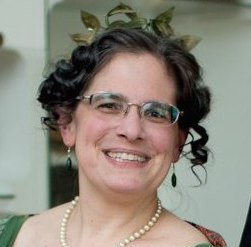Winding down for the year after a busy late autumn with a final trip up to Boston. Then home for a few weeks to attempt to catch up on writing projects!
Author: Susan de Guardiola
-
November 2022 Gig Calendar
Things are getting lively again! Online and in-person workshops, two balls, and a DJ gig, plus at least two library visits, and I'm hoping for four…
-
October 2022 Gig Calendar
Writing time! I have a huge backlog of papers and articles to get written, so I'll be spending most of October home doing that, with one trip at the end of the month to the UK for an academic conference.
-
September 2022 Gig Calendar
Finally, a month that begins to look like normal for me, with workshops and DJing and lots of research time. On the road again!
-
August 2022 Gig Calendar
Onward goes the hot and quiet summer! I am still consolidating and collating and cataloguing my research collection, with interesting results, especially in the "collating" area, with my only event this month a reunion with my pandemic group of online cotillion students!
-
July 2022 Gig Calendar
Well, now I have two months of a fairly long, hot summer ahead of me without much going on before things kick back into gear again in the autumn. I've been making a project for the last month or so of organizing and cataloguing my rather enormous collection (and, um, backlog) of research photos from various libraries, so I expect I'll continue with that, and I have plenty of writing to do! But first, one more online lecture!
-
June 2022 Gig Calendar
Another month full of exciting travel, this time to Germany, and then on to precepting a Civil War ball in Pennsylvania. In-person teaching and dancing, hurrah!
-
May 2022 Gig Calendar
IN-PERSON EVENTS. That pretty much sums it up. See you on the real, live dance floor!
-
April 2022 Gig Calendar
Spring has sprung, I'm still in the USA, and I have one more month of online events before transitioning back to primarily in-person teaching in May and June!
Please note: online events listed below are hosted in different cities/countries in different time zones. Please adjust for your own time zone before planning online attendance!
-
March 2022 Gig Calendar
Well.
The major possibility I was expecting for March was to move back to Moscow and resume teaching dance in Russia and Ukraine, so I didn't plan much of anything else. As anyone who has not been living under a rock for the last few days is no doubt aware, that is probably not happening this month, and it's hard to say whether it will happen in the foreseeable future. Or at all.
So…new possibilities are needed. I'll make a quick research trip to Boston early this month and will be working on other events and workshops in the USA for later this spring, plus planning for one or two conferences in Europe. For those who've been wanting me in the USA but have been blocked first by my mostly being in Russia and then by the pandemic, this is a great time to book me.
Is anyone else tired of being resilient after the last two years?
Please note: the events listed below are hosted in different cities/countries in different time zones. Please adjust for your own time zone before planning online attendance!

